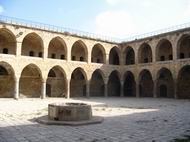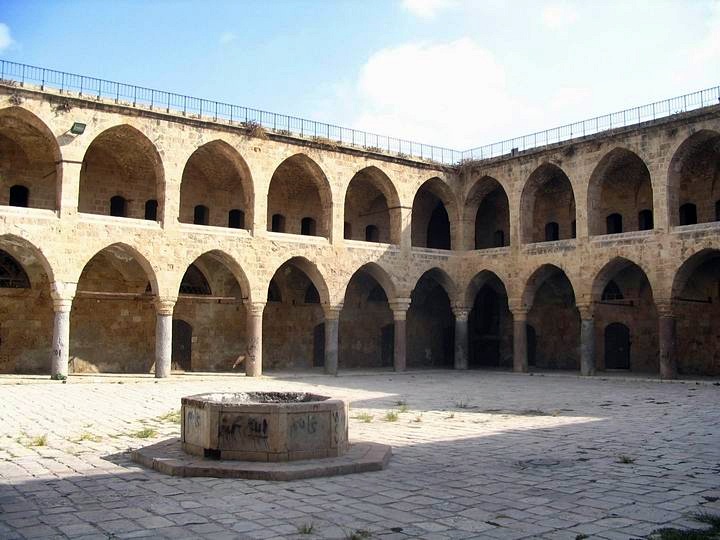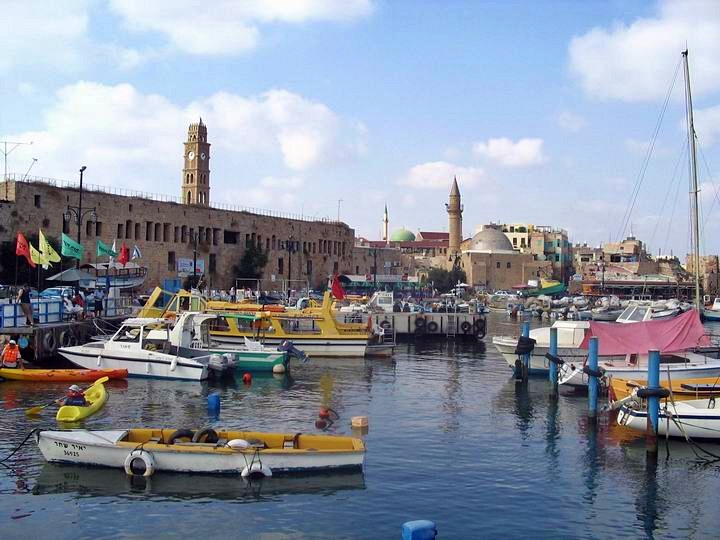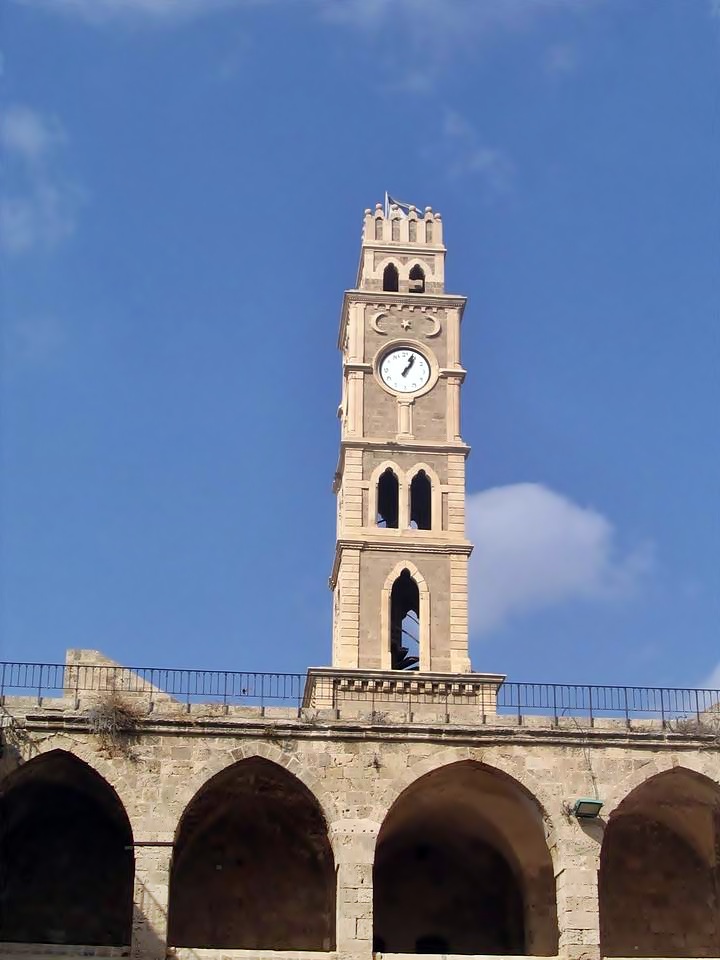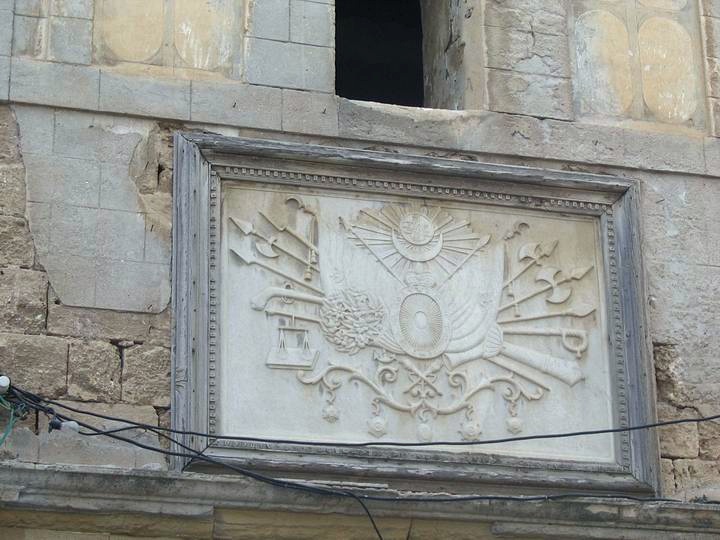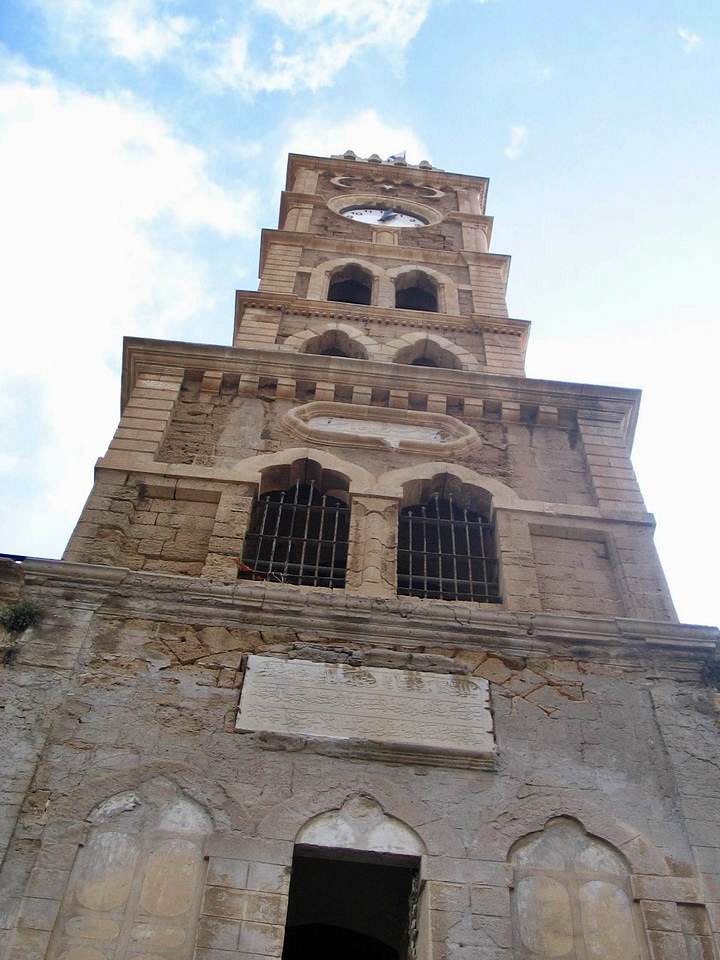This Khan (Inn) is one of the most beautiful sites in the old city of Acre. It was used as a hostel and storage for the sea merchants. Built in 1784-5 by Jezzer Pasha over parts of the inner Crusaders port.
Home > Sites > Acre > Khan al-Umdan
Contents:
Background
Location
History
Photos
* Court yard
* Port view
* Clock tower
Etymology
Background:
Khan al-Umdan is a historic caravanserai located in the city of Acre, Israel. It was built in the 18th century during the Ottoman period, and served as a major trade center and hub for merchants and travelers from all over the Mediterranean region.
The name “Khan al-Umdan” means “Inn of the Columns,” and refers to the numerous granite columns that support the building’s arches and domed roof. The structure was designed to accommodate the needs of traveling merchants, providing them with lodging, storage space for goods, and even stables for their horses and camels.
The caravanserai is one of the most impressive buildings in Acre’s Old City, and is considered to be one of the finest examples of Ottoman architecture in the region. It has undergone numerous renovations and restorations over the years, and today serves as a museum and cultural center that celebrates the rich history and heritage of the city.
Location:
The Khan is located near the marina, on the south-east side of the old city. You can stroll inside the old city and enter the Khan from the east side (facing the market) or from the west side (a passage to the Pisan port).
History of the place:
- Crusaders
In the Crusaders times (12th-13th century AD), before the Khan was built, the place was the center of the Royal Cathena quarter. It was the probable site of the “Court of the Chain” which adjudicated cases of maritime commerce. Also, at the site was an internal anchorage of the port of Akko.
The Templars also built an underground tunnel from this port to their fortress on the south-west side (read about it in another page).
- Khan is built
The inn was built in 1784-5 by the Governor of Acre, Ahmed Jezzer Pasha, as one of his projects of improvements in the city. The hostel was built on part of the inner harbor. In the Napoleon maps, used at the siege of 1799, the site still appeared as an inner port.
It was called initially Khan el-Jezzer, named after the Governor. Soon the hostel was known as Khan el-Umdan – the inn of the pillars. The magnificent courtyard is dominated by these pillars: there are 40 marble pillars that were brought from the ruins of Caesarea, and possibly Atlit as well.
- Use of the Khan
Due to its proximity to the port, merchandise of the maritime import-export was stored at the Turkish times. It was also used by the merchants as a hostel.
- Modern days
Nowadays, the khan is a tourist spot. It is also used as a open air stage during the festivals in the city, such as the Theater festival during the month of October.
Photos:
(a) The court yard:
After entering the court yard, a magnificent view of the pillars is seen from all sides. These marble pillars hold the arches that support the second floor. A well is located in the center.
Click on the photo to view it in higher resolution…
(b) View from the Port:
This is the view from the ancient port, now used as a marina.
On the right side, with a silver dome and tower, is the Al-Bahr Mosque (the sea mosque), originally called the Sinan Pasha mosque. It was built in 1586, destroyed in the 18th century, and rebuilt in 1816.
In the far background (a green tower) is the Grand Mosque, El-Jezzer.
(c) The Clock Tower:
This tower raises high over the east entrance to the Khan. It was built in 1906 to honor the 30-year Jubilee of Sultan Abdul Hamid II (lived 1842-1918, Sultan 1876-1909).
A marble plate is located above the entrance, with the emblems of the Ottoman Sultans.
A view from the bottom of the tower.
Etymology (behind the name):
-
Khan – Arabic: Inn, caravanserai. In Hebrew the root word, “Khana”, means stayed over, and so both languages share common roots.
-
Umdan – Pillars in Arabic.
BibleWalks.com – walk with us through the sites of the Holy Land
Navigation bar:
Tell Akko <<<–previous site—<<<All Sites>>> —-next Acre site –>>> Templars Tunnel
This page was last updated on Feb 16, 2023 (new overview)
Sponsored links:
